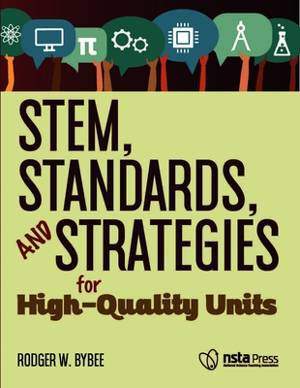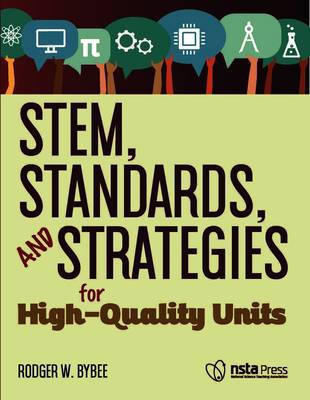
Je cadeautjes zeker op tijd in huis hebben voor de feestdagen? Kom langs in onze winkels en vind het perfecte geschenk!
- Afhalen na 1 uur in een winkel met voorraad
- Gratis thuislevering in België vanaf € 30
- Ruim aanbod met 7 miljoen producten
Je cadeautjes zeker op tijd in huis hebben voor de feestdagen? Kom langs in onze winkels en vind het perfecte geschenk!
- Afhalen na 1 uur in een winkel met voorraad
- Gratis thuislevering in België vanaf € 30
- Ruim aanbod met 7 miljoen producten
Zoeken
€ 47,45
+ 94 punten
Omschrijving
Do you, your school, or your school district want to align your science curriculum with state standards while meeting the growing demand for STEM instruction? If so, this is the book for you. It's a guide to creating coherent, high-quality classroom materials that make standards and STEM work together in ways that are both effective for learning and practical for teaching. The author of STEM, Standards, and Strategies for High-Quality Units is thought leader and curriculum expert Rodger W. Bybee. He wrote it to be useful for individual teachers, professional learning communities, and professional developers. The book offers explicit directions for how these different groups can use the book's background information and activities at each step of developing a standards-based STEM unit. Book sections discuss the following: - Making decisions about selecting, adapting, and developing STEM materials - Getting started with preliminary unit designs - Improving your design with new knowledge and skills - Developing your STEM unit - Teaching and improving your unit Throughout the book, Bybee draws on contemporary educational strategies such as the 5E Instructional Model, backward design, and lesson study. "Because most states have new science standards, it only makes sense to incorporate various aspects of those standards in STEM activities," Bybee writes. STEM, Standards, and Strategies for High-Quality Units can help you do this, whether your school is developing a new STEM program, adapting current instructional materials, or creating new materials of its own.
Specificaties
Betrokkenen
- Auteur(s):
- Uitgeverij:
Inhoud
- Aantal bladzijden:
- 190
- Taal:
- Engels
Eigenschappen
- Productcode (EAN):
- 9781681406268
- Verschijningsdatum:
- 26/04/2020
- Uitvoering:
- Paperback
- Formaat:
- Trade paperback (VS)
- Afmetingen:
- 214 mm x 274 mm
- Gewicht:
- 698 g

Alleen bij Standaard Boekhandel
+ 94 punten op je klantenkaart van Standaard Boekhandel
Beoordelingen
We publiceren alleen reviews die voldoen aan de voorwaarden voor reviews. Bekijk onze voorwaarden voor reviews.









